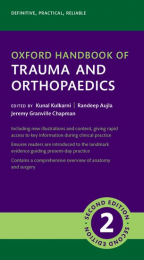-
Features focused, introductory coverage that simplifies the method of making a neurologic diagnosis
-
Concisely written for medical students and residents
-
Emphasizes novel, practical approaches and techniques that can be used to establish neuroanatomic diagnosis before formulating a differntial diagnosis
The Neurologic Diagnosis: A Practical Bedside Approach is an introductory text that simplifies the often unwieldy method of making a neurologic diagnosis. Medical students are often intimidated by a deluge of data, extensive differential diagnoses, and have no organizational structure to follow. Diagnostic techniques of general medicine are not applicable. Neurology is a unique specialty since it requires the intermediary step of an anatomic diagnosis prior to proffering a differential diagnosis. Yet the required knowledge of neuroanatomy need not be profound for the student who will specialize in any field other than neurology and neurosurgery. This text is directed to medical students and residents who will all be regularly faced with numerous patients who have neurologic symptomatology. Typical one-month neurology rotations out of four years of medical school is clearly inadequate training to make a cogent neurologic diagnosis, especially since subsequent instruction is commonly provided by upper level residents who have the same background and numerous misconceptions. This is not a comprehensive text. The emphasis in this concise and practical title is on establishing a neuroanatomic diagnosis before formulating a differential diagnosis. In addition, treatment is seldom discussed since it is likely to change radically over time. Focused and succinct, The Neurologic Diagnosis: A Practical Bedside Approach is an invaluable resource for medical students and residents interested in the practice of neurological diagnosis.
Forward
Preface
Chapter 1 - Introduction
Chapter 2 - The Ten Neuroanatomic Diagnoses
Chapter 3 - The Neurologic History Holds the Diagnostic Keys
Chapter 4 - Neurologic Examination
Chapter 5 - Evaluation of the Poorly Responsive Patient
Neurologic Examination
Metabolic Encephalopathy
Hypoxic Ischemic Encephalopathy
Herniation Syndromes
Chronic Disorders of Consciousness
Brain Death
Chapter 6 - The Six Major Anatomic Decussations with Clinical Correlation
Chapter 7 - Cerebrovascular Anatomy with Clinical Correlation
Chapter 8 - Autonomic Nervous System Anatomy with Clinical Correlation
Chapter 9 - Neuromuscular Diseases: Neuroanatomic and Differential Diagnoses
Chapter 10 - Common Symptoms in the Neurology Clinic
Headache
Vertigo
Near-Syncope, Syncope and Seizure
Sleep Disorders
Other Transient Neurologic Symptoms
Chapter 11 - Diagnostic Dilemmas
Chapter 12 - Neurologic Terminology
Acronyms
Signs
Syndromes
Index to Diseases





